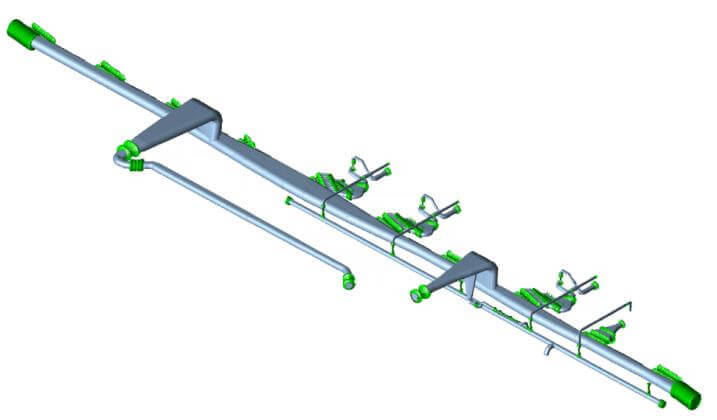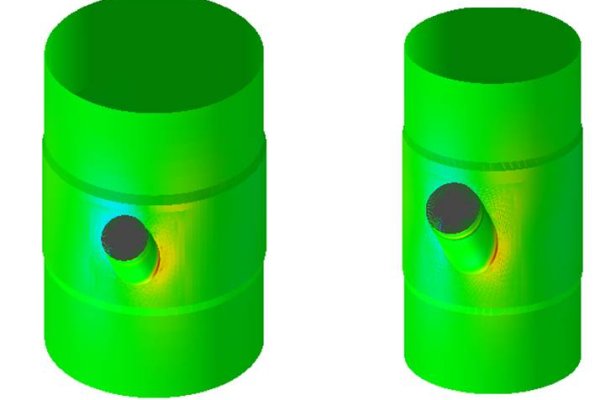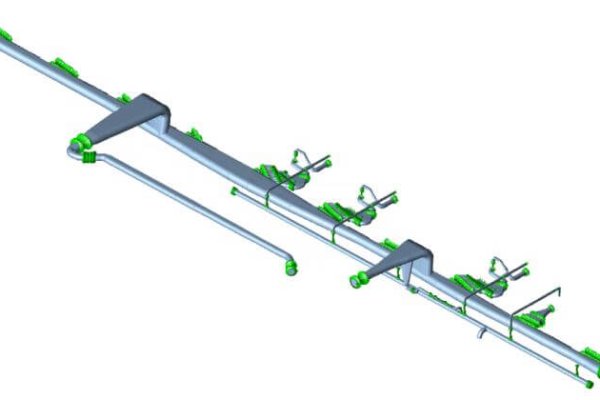Introduction
At a Flow Station in Nigeria, vibration issues were observed in the suction and discharge headers, as well as the pump recirculation line. To address these concerns and identify potential underlying issues, DRG conducted a comprehensive pulsation analysis combined with a mechanical response assessment.
Analysis
A stress model was developed using pipe stress software CAESAR II, utilizing available piping information. This model facilitated a static stress analysis to validate the adequacy of existing support locations and their functionality.
For the pulsation analysis, a flow model was created using BOSfluids, adhering to the API 674 standard for reciprocating pumps. The analysis included evaluating pressure pulsations, acoustic frequencies, and determining resultant unbalanced loads. These unbalanced loads were then integrated into the CAESAR II model to conduct a mechanical response analysis.
Results
Based on the static stress and mechanical response analyses, modifications to support structures at 11 different locations were recommended to meet required standards. These modifications aimed to optimize support locations and functions to mitigate dynamic stresses effectively.
By employing the proposed configuration, which incorporated the recommended support modifications, the analysis identified the most critical scenarios involving different pump configurations and operational speeds. This approach ensured that the system could handle the most conservative unbalanced forces derived from the pulsation analysis.
Conclusions
The calculated unbalanced loads played a crucial role in assessing the mechanical response of the entire system. To ensure dynamic stresses remained well below fatigue limits, two additional support modifications were deemed necessary.
This comprehensive approach to pulsation and mechanical response analysis not only addressed the vibration issues observed at the Flow Station but also provided actionable recommendations for enhancing system reliability and performance.







